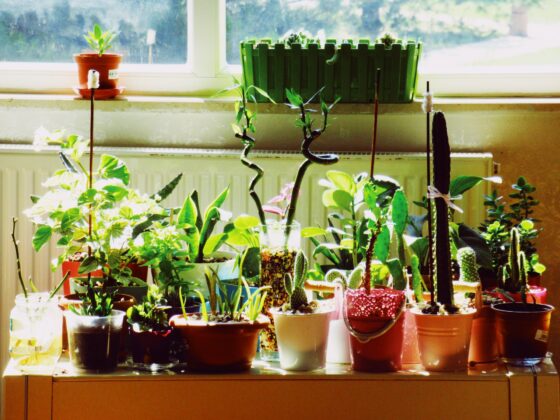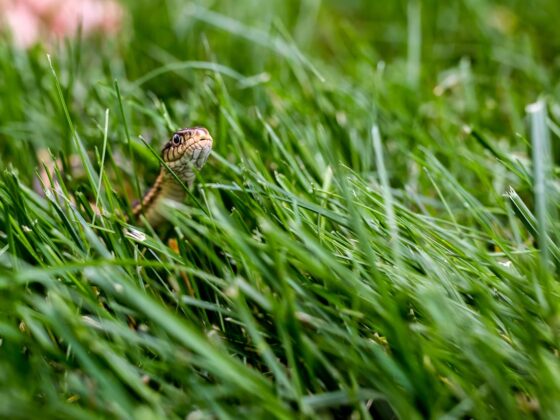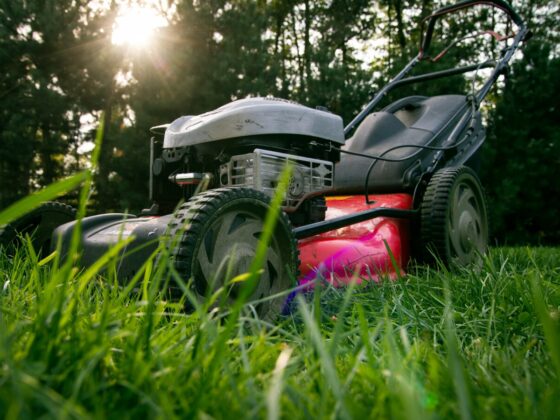Groundhogs, also known as woodchucks, are adorable creatures with their plump bodies and bushy tails. However, their cuteness can quickly turn into a headache when they start wreaking havoc in your garden. These furry critters have a voracious appetite for fresh produce, and if left unchecked, they can decimate your prized plants in no time.
The Groundhog Problem
Groundhogs are skilled diggers and climbers, making them formidable opponents when it comes to protecting your garden. They are particularly fond of vegetables like lettuce, beans, peas, and carrots, but they won’t hesitate to munch on your flowers or herbs either. Their burrows can also cause damage to your lawn or even pose a safety hazard if they undermine structures.
If you want to protect your garden from groundhogs, here are some tips and tricks you can try:
- Fence your garden with a sturdy wire mesh that is at least 3 feet high and buried 1 foot deep. Leave the top foot unattached and bent away from the garden. This will prevent groundhogs from climbing over or digging under the fence.
- Plant some herbs and flowers that groundhogs dislike, such as garlic, onion, lavender, sage, rosemary, marigold, and daffodil. These plants can act as natural repellents and deter groundhogs from entering your garden.
- Sprinkle some Epsom salt, cayenne pepper, or blood meal around your garden. These substances have a strong smell and taste that groundhogs hate. You can also make a homemade spray with hot peppers, garlic, onion, and water, and spray it on your plants.
- Use some predator urine, such as fox, coyote, or bobcat, to scare away groundhogs. You can buy these products online or at a local garden centre. Apply them around the perimeter of your garden and near the groundhog burrows.
- Set up some motion-activated devices, such as sprinklers, lights, or noise makers, to startle and frighten groundhogs. These devices can be effective in keeping groundhogs away from your garden, especially at night.
- Trap and relocate groundhogs with a live trap. This is a humane and ethical method, but you need to check with your local wildlife agency about the laws and regulations regarding relocating trapped wildlife. Place the trap near the groundhog burrow and bait it with some fruits or vegetables. Once you catch a groundhog, release it in a wooded area far away from your property.
Preventing Groundhog Damage

Fortunately, there are several effective strategies you can employ to keep groundhogs at bay and safeguard your garden. Here are some tried-and-true methods:
1. Install a Fence
A sturdy fence is one of the most reliable ways to keep groundhogs out of your garden. Opt for a fence that is at least three feet high and buried at least a foot deep to prevent these burrowers from digging underneath. Make sure the fence is made of a material that groundhogs cannot easily chew through, such as chicken wire or hardware cloth.
2. Create a Barrier
If you don’t want to go through the trouble of installing a fence, you can create a barrier around your garden beds. Use materials like mesh netting or row covers to physically block groundhogs from accessing your plants. Make sure the barrier is tall enough to prevent them from climbing over and secure it firmly to the ground to prevent them from burrowing underneath.
3. Deter with Scents
Groundhogs have a keen sense of smell, which you can use to your advantage. Planting strong-smelling herbs like mint, lavender, or thyme around your garden can help deter these critters. You can also try sprinkling natural repellents like cayenne pepper, garlic powder, or predator urine around the perimeter of your garden to create an unpleasant environment for groundhogs.
4. Remove Attractants
Groundhogs are attracted to areas with ample food and shelter. Remove any fallen fruits or vegetables from your garden promptly, as they can entice these critters. Keep your garden free of weeds and overgrown vegetation, as they provide hiding spots for groundhogs. By eliminating these attractants, you can make your garden less appealing to them.
Dealing with Groundhog Burrows

If groundhogs have already established burrows in your yard, it’s essential to address the issue promptly to prevent further damage. Here’s what you can do:
1. Fill and Seal Burrows
Fill any groundhog burrows with soil and tamp it down firmly to discourage the critters from returning. It’s crucial to fill the burrows completely to prevent them from collapsing and creating potential hazards.
2. Use Deterrents
Place objects like rocks, logs, or thorny branches near the burrow entrances to discourage groundhogs from re-digging. These deterrents make the burrows less appealing and can help drive the critters away from your property.
3. Seek Professional Help
If you’re facing a persistent groundhog problem or are unsure how to handle it yourself, don’t hesitate to seek assistance from professional pest control services. They have the knowledge and experience to safely and effectively deal with groundhog infestations.
Conclusion
While groundhogs may be cute, they can quickly become a nuisance in your garden. By implementing these preventative measures and addressing any existing burrows, you can protect your prized produce from these destructive critters. Remember, a little effort in safeguarding your garden can go a long way in preserving its beauty and productivity.
Frequently Asked Questions
A groundhog, also known as a woodchuck, is a small mammal belonging to the squirrel family. They are known for their stocky build, short legs, and bushy tails. Groundhogs are primarily found in North America.
Groundhogs are famous for their role in the annual Groundhog Day celebration on February 2nd. According to folklore, if a groundhog emerges from its burrow and sees its shadow, it predicts six more weeks of winter. This tradition has gained popularity and attracts visitors from all over the world.
Groundhogs are herbivores and primarily feed on vegetation such as grass, leaves, flowers, and crops. They are known to be excellent diggers and create elaborate burrow systems that can extend up to several feet underground.
Groundhogs are generally not dangerous to humans. They are shy animals and prefer to avoid confrontation. However, they can cause damage to gardens and crops if left unchecked. It is advisable to take preventive measures to protect your property if you have groundhogs in your area.
Groundhogs are true hibernators and typically hibernate from late fall to early spring. During this period, their body temperature drops, and their heart rate and metabolism slow down significantly. They rely on their fat reserves to survive the winter months.
Yes, groundhogs are capable swimmers. They have webbed feet, which help them paddle through water. However, they are not as proficient in water as other aquatic animals.
Groundhogs are wild animals and are not suitable as pets. They have specific dietary and environmental needs that are challenging to replicate in a domestic setting. It is illegal to keep a groundhog as a pet in many regions.
To prevent groundhog damage, you can install fences around your garden, use repellents, or plant vegetation that groundhogs dislike. It is also helpful to remove any potential food sources or attractants from your property.
No, groundhogs and gophers are different animals. While they both belong to the rodent family, they have distinct physical characteristics and habits. Groundhogs are larger and live in burrows, whereas gophers are smaller and create extensive tunnel systems underground.
The average lifespan of a groundhog in the wild is around 6-8 years. However, some groundhogs have been known to live up to 14 years in captivity.











